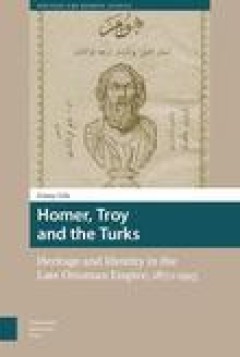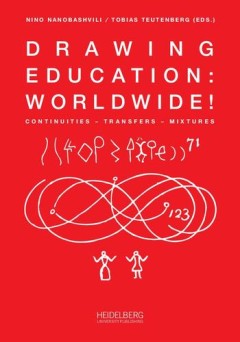Filter by

Homer, Troy and the Turks: heritage and identity in the Late Ottoman Empire 1…
Homer's stories of Troy are part of the foundations of Western culture. What's less well known is that they also inspired Ottoman-Turkish cultural traditions. Yet even with all the historical and archaeological research into Homer and Troy, most scholars today rely heavily on Western sources, giving Ottoman work in the field short shrift. This book helps right that balance, exploring Ottoman-Tu…
- Edition
- -
- ISBN/ISSN
- 9789462982697
- Collation
- 219 pages : illustrations ; 24 cm.
- Series Title
- Heritage and memory studies ; 4
- Call Number
- 949.6 USL h

High-tech trash: glitch, noise, and aesthetic failure
High-Tech Trash: Glitch, Noise, and Aesthetic Failure maps an archaeology of failure in a culture seemingly ill-equipped to deal with it. To better understand failure, Kane argues, we must abstract from our subjective, personal disappointments and see them as meaningful symbols of a broader human struggle. By connecting twenty-first century digital aesthetics to critical issues in the history o…
- Edition
- -
- ISBN/ISSN
- 9780520974494
- Collation
- 253p.: ill.
- Series Title
- Rhetoric and public culture: history, theory, critique; 1
- Call Number
- 700.105 KAN h

Artificial intelligence and the Internet of Things : UK policy opportunities …
"Through algorithms and artificial intelligence (AI), objects and digital services now demonstrate new skills they did not have before, right up to replacing human activity through pre-programming or by making their own decisions. As part of the internet of things, AI applications are already widely used today, for example in language processing, image recognition and the tracking and processin…
- Edition
- -
- ISBN/ISSN
- 9781911534846
- Collation
- 27p. : ill.
- Series Title
- -
- Call Number
- 384.33 BUN a

An open book : what and how young children learn from picture and story books
Looking at and listening to picture and story books is a ubiquitous activity, frequently enjoyed by many young children and their parents. Well before children can read for themselves they are able to learn from books. Looking at and listening to books increases children’s general knowledge, understanding about the world and promotes language acquisition. This collection of papers demonstrate…
- Edition
- -
- ISBN/ISSN
- 9782889197286
- Collation
- 200p. : ill.
- Series Title
- -
- Call Number
- 372.4 OPE o

Drawing education : wordwide! : continuities - transfers - mixtures
As a cultural technique, drawing was firmly anchored in the realities of European society from early modern to modern times. Based on this fact, the present volume asks for the first time about the significance of drawing and drawing education in other cultural areas. Indigenous methods of drawing and sign-learning in Arabic, Asian, Latin American, North American and European countries are addr…
- Edition
- -
- ISBN/ISSN
- 9783947732302
- Collation
- vii, 323p. : ill.
- Series Title
- -
- Call Number
- 370 NAN d
 Computer Science, Information & General Works
Computer Science, Information & General Works  Philosophy & Psychology
Philosophy & Psychology  Religion
Religion  Social Sciences
Social Sciences  Language
Language  Pure Science
Pure Science  Applied Sciences
Applied Sciences  Art & Recreation
Art & Recreation  Literature
Literature  History & Geography
History & Geography